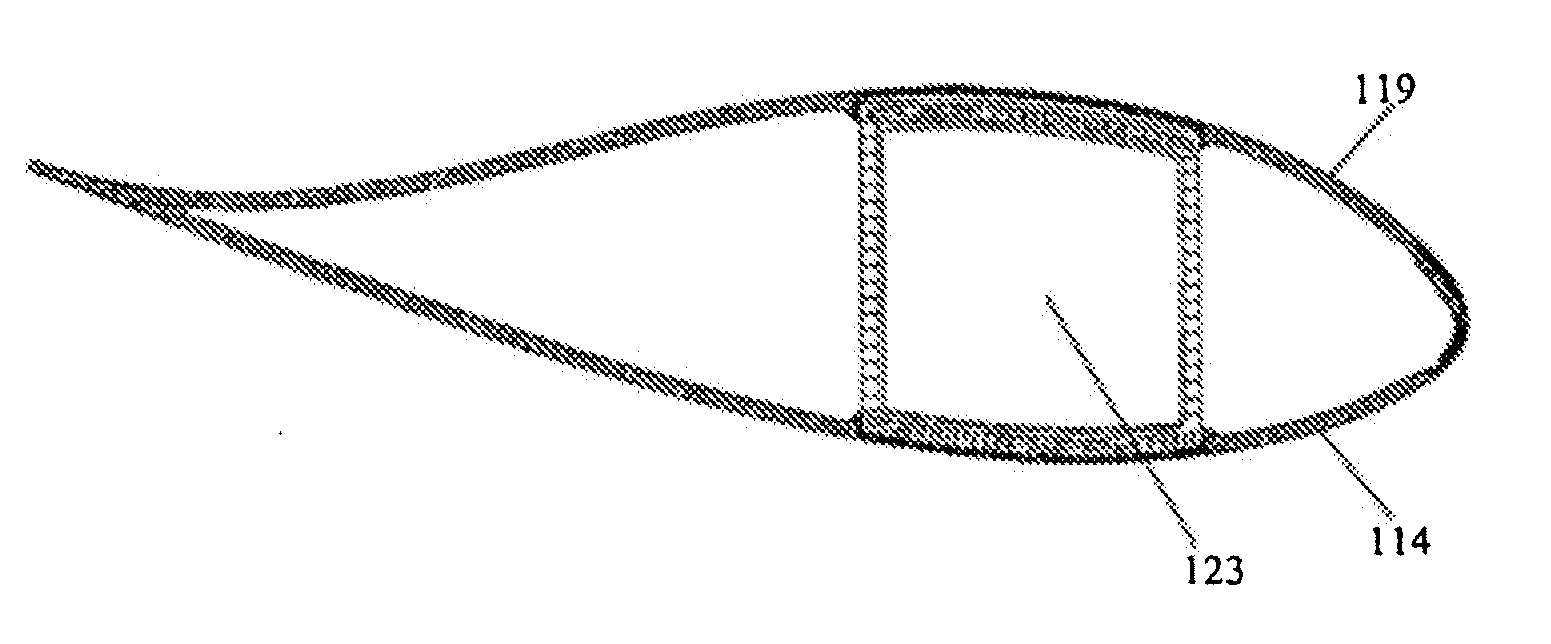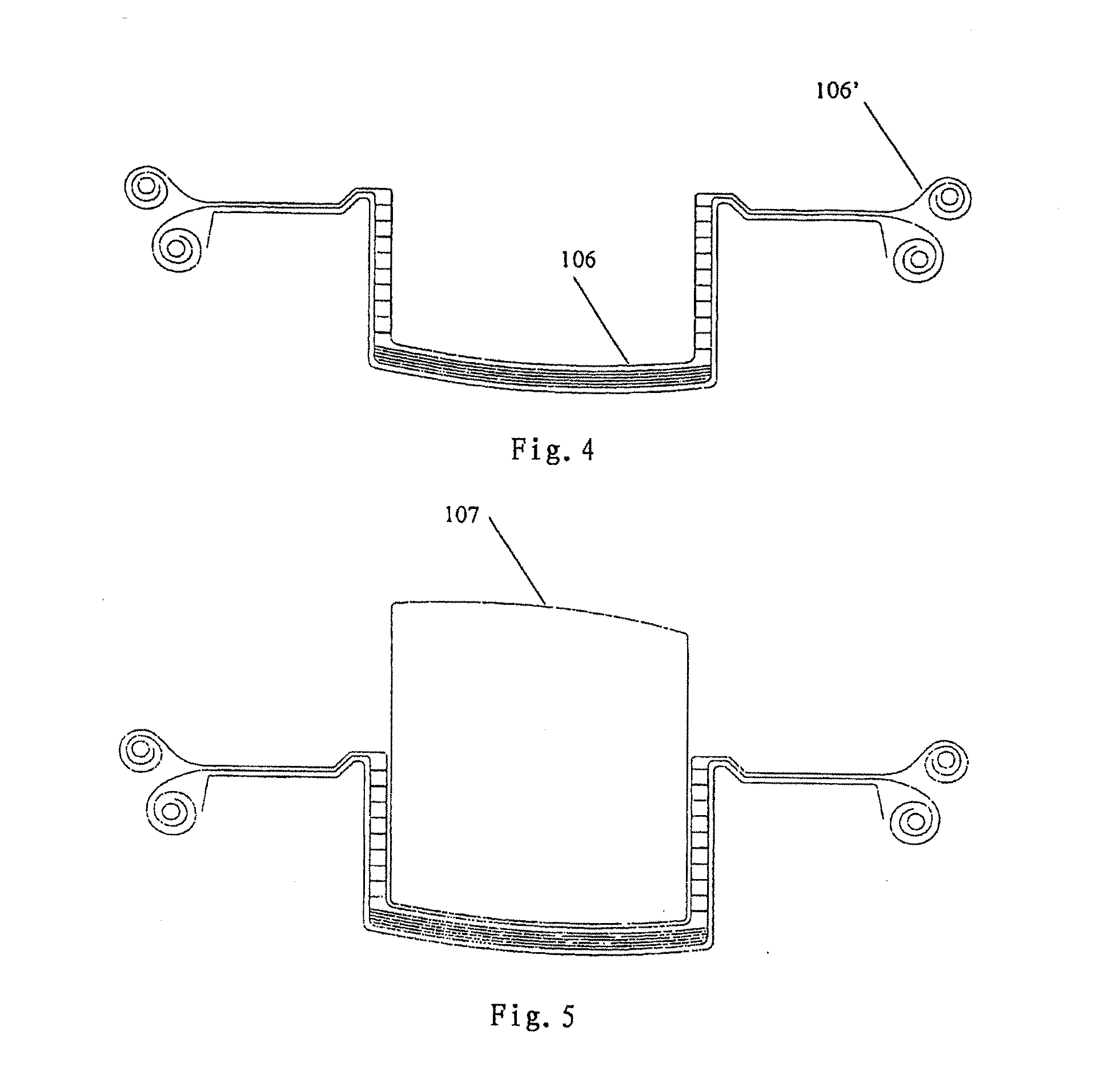Wind turbine blade and its producing method
a technology of wind turbine blades and producing methods, which is applied in the direction of wind turbines with perpendicular air flow, wind turbines with parallel air flow, wind turbines, etc., to achieve the effect of saving labor costs
- Summary
- Abstract
- Description
- Claims
- Application Information
AI Technical Summary
Benefits of technology
Problems solved by technology
Method used
Image
Examples
Embodiment Construction
[0033]Generally, a wind turbine blade comprises a structural box and a shell consisting of an upper shell part and a lower shell part. The structural box is a load carrying member, and the shell is not a load carrying member, but merely an aerodynamic fairing. According to the present invention, the structural box and the shell are independent parts that are made by using separate moulds.
[0034]Now, a description will be first given to the production of the structural box with reference to FIGS. 1-10.
[0035]A lower structural box mould 102 is provided for forming a lower half of the structural box. Outer cover layers 101 of the lower half of the structural box, made up of multiaxial prepreg material, are laid into the lower structural box mould 102. Excess material 103 is left rolled up on both sides of the mould cavity.
[0036]Then, cap layers 104 of the lower half of the structural box, made up of unidirectional prepreg, are stacked into the bottom of the lower structural box mould.
[0...
PUM
| Property | Measurement | Unit |
|---|---|---|
| thickness | aaaaa | aaaaa |
| density | aaaaa | aaaaa |
| density | aaaaa | aaaaa |
Abstract
Description
Claims
Application Information
 Login to View More
Login to View More - R&D
- Intellectual Property
- Life Sciences
- Materials
- Tech Scout
- Unparalleled Data Quality
- Higher Quality Content
- 60% Fewer Hallucinations
Browse by: Latest US Patents, China's latest patents, Technical Efficacy Thesaurus, Application Domain, Technology Topic, Popular Technical Reports.
© 2025 PatSnap. All rights reserved.Legal|Privacy policy|Modern Slavery Act Transparency Statement|Sitemap|About US| Contact US: help@patsnap.com



